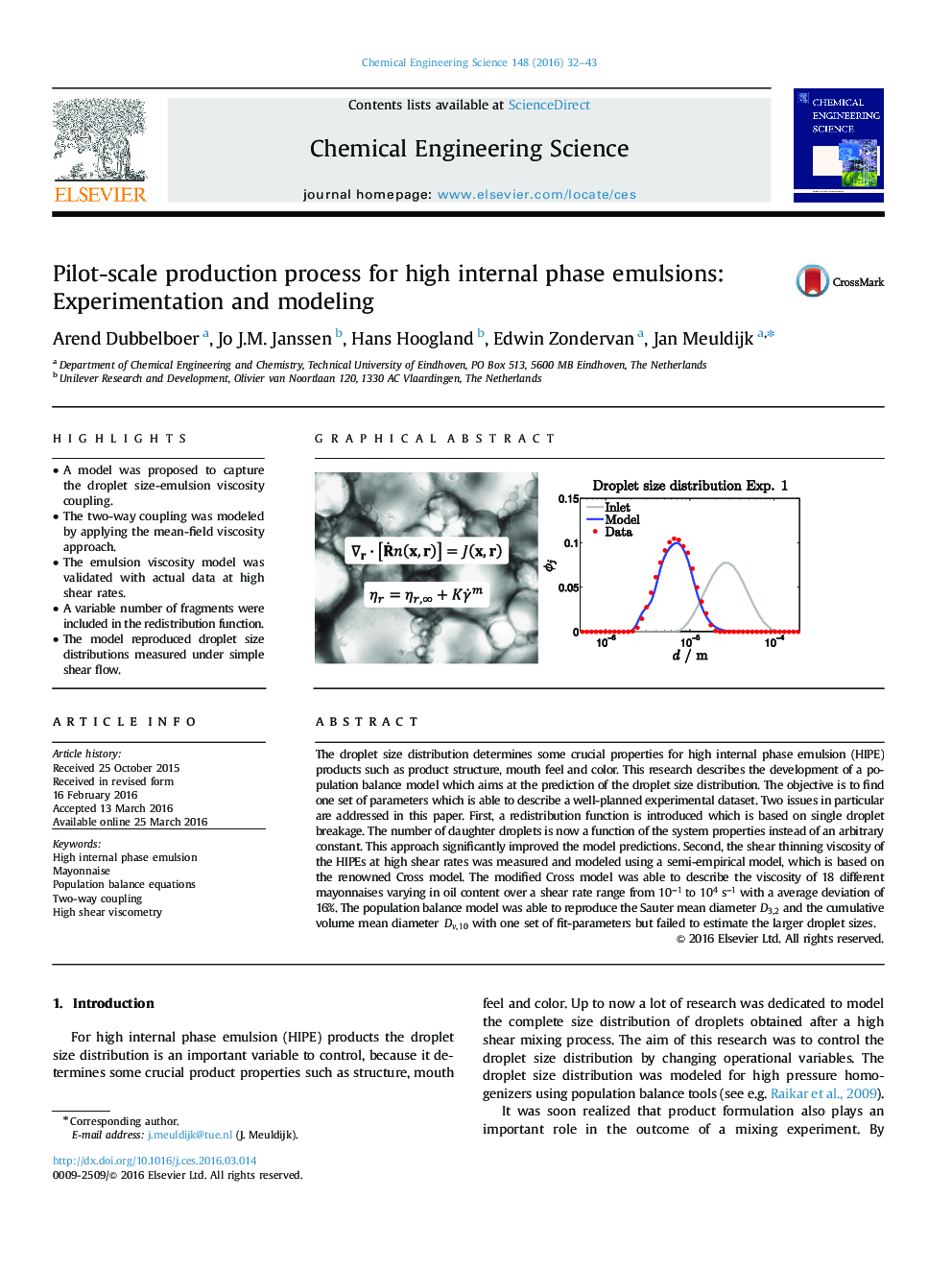| Article ID | Journal | Published Year | Pages | File Type |
|---|---|---|---|---|
| 154394 | Chemical Engineering Science | 2016 | 12 Pages |
•A model was proposed to capture the droplet size-emulsion viscosity coupling.•The two-way coupling was modeled by applying the mean-field viscosity approach.•The emulsion viscosity model was validated with actual data at high shear rates.•A variable number of fragments were included in the redistribution function.•The model reproduced droplet size distributions measured under simple shear flow.
The droplet size distribution determines some crucial properties for high internal phase emulsion (HIPE) products such as product structure, mouth feel and color. This research describes the development of a population balance model which aims at the prediction of the droplet size distribution. The objective is to find one set of parameters which is able to describe a well-planned experimental dataset. Two issues in particular are addressed in this paper. First, a redistribution function is introduced which is based on single droplet breakage. The number of daughter droplets is now a function of the system properties instead of an arbitrary constant. This approach significantly improved the model predictions. Second, the shear thinning viscosity of the HIPEs at high shear rates was measured and modeled using a semi-empirical model, which is based on the renowned Cross model. The modified Cross model was able to describe the viscosity of 18 different mayonnaises varying in oil content over a shear rate range from 10−1to104s−1 with a average deviation of 16%. The population balance model was able to reproduce the Sauter mean diameter D3,2D3,2 and the cumulative volume mean diameter Dv,10Dv,10 with one set of fit-parameters but failed to estimate the larger droplet sizes.
Graphical abstractFigure optionsDownload full-size imageDownload high-quality image (240 K)Download as PowerPoint slide
